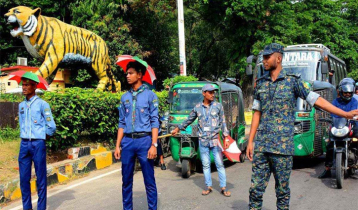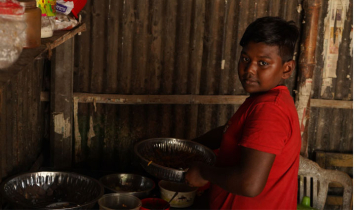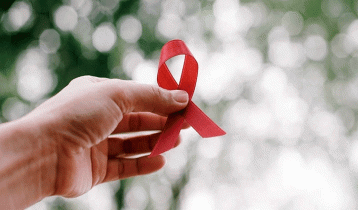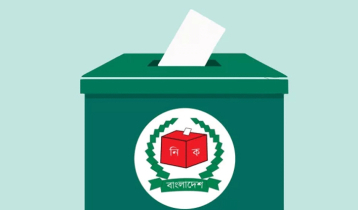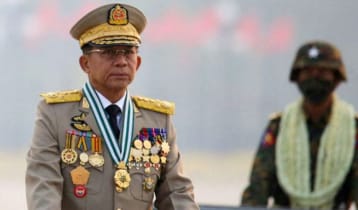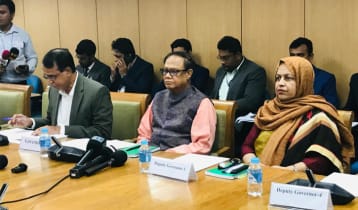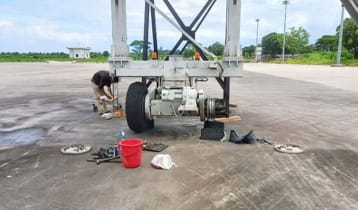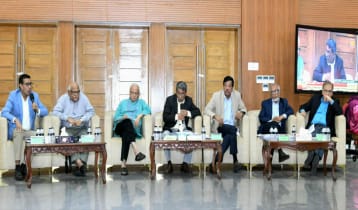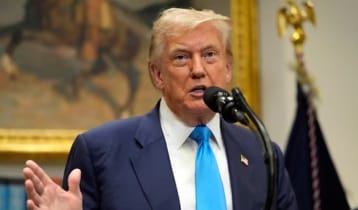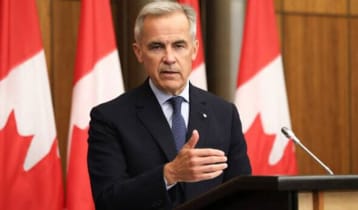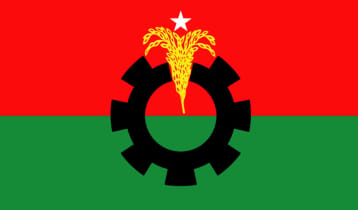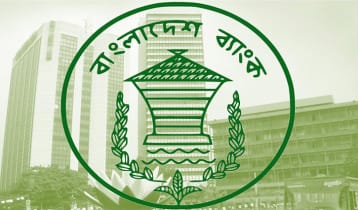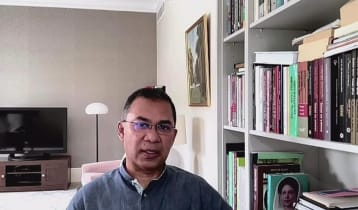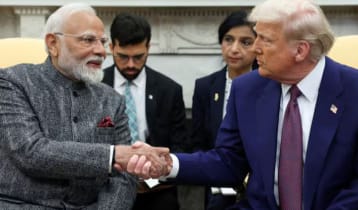World is on track to eradicate polio
Hasan Mahmud || risingbd.com
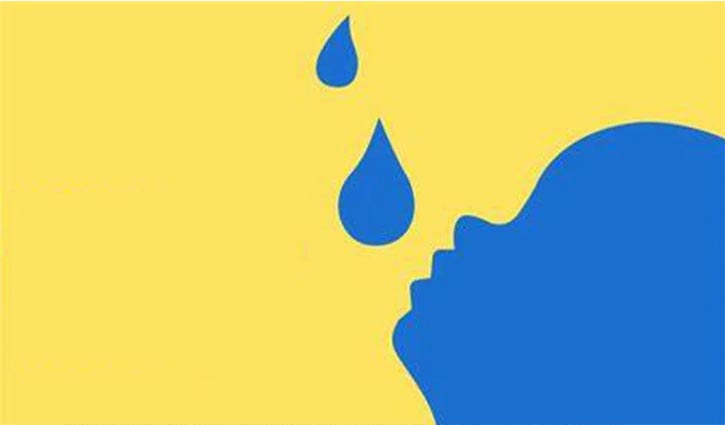
No polio cases have been found in Bangladesh in the last 17 years. At 2006, last 18 polio patients were found in Bangladesh. Except few countries, polio is now under control. Now it is necessary to move forward with learning from successful countries.
To ensure a polio-free future for everyone, efforts must continue to maintain high immunization coverage. High-quality surveillance must be implemented to detect the presence of the virus and be prepared to respond to outbreaks.
Experts say, even though Bangladesh is polio-free due to the success of vaccination, it is still not risk-free. Because no matter where in the world a child carrying the virus lives, the virus is at risk of spreading to other countries. For this, the experts advise to continue the ongoing activities without lifting the veil of awareness.
While caution is advised, Bangladesh's success story can serve as an example for many countries. Bangladesh is an example of a country where routine immunization and polio eradication have worked in synergy for so long that the former now carries the latter. As we are shifting to the new era of polio vaccines, it is important to understand the switch and the challenges ahead.
Polio eradication in Bangladesh
In 2014, Bangladesh was declared a polio-free country by the regional certification committee of WHO South Asia Region, an official recognition for polio eradication from the country and a major public health milestone.
This great achievement came after long efforts that started in 1979 with the launch of Expanded Program on Immunization (EPI) and intensified in 1995 when Bangladesh joined global polio eradication efforts and conducted the first nationwide national immunization days (NIDs).
Polio was eradicated in Bangladesh in 2000. But while the virus continues to circulate in nearby countries such as Pakistan, keeping surveillance strong is crucial to ensure the virus does not return unnoticed.
What are the types of polio vaccines?
Two types of vaccines are used to prevent poliomyelitis: An inactivated poliovirus given by injection (IPV) and a weakened poliovirus given by mouth (OPV). OPV is superior to IPV in ease of administration, and there is no need for sterile syringes, making the vaccine more suitable for mass vaccination campaigns. OPV also provides longer immunity.
The only serious adverse events associated with OPV are the occurrence of vaccine-associated paralytic poliomyelitis (VAPP) and the emergence of vaccine-derived polioviruses (VDPVs). OPV causes about three cases of VAPP per million doses given.
Why do countries continue to use OPV?
Although wild poliovirus circulation is now limited to Afghanistan and Pakistan, the risk of international spread remains, and is the basis for continued use of OPV. OPV is capable of inducing mucosal immunity in the intestine, the primary site where poliovirus replicates. By doing so, the vaccine prevents shedding of the virus into the environment and can limit or stop person-to-person transmission. This is especially important in communities with poor water and sanitation infrastructure where people are more likely to be exposed to water-borne pathogens.
What is the vaccine switch?
The oral polio vaccine switch is a globally synchronized event and a critical step towards polio eradication. It involves replacing the trivalent oral polio vaccine (tOPV), which protects against three type of poliovirus (types 1, 2 and 3), with a new bivalent vaccine (bOPV) that will provide greater immunity against two types of polio (types 1 and 3). The switch will also involve disposing of all batches of the old vaccine so that it is no longer being used anywhere in the world.
Why do we need the vaccine switch?
Use of tOPV led to the successful eradication of type 2 poliovirus from the world in 1999. In rare cases, in areas with low routine tOPV coverage, the “type 2” component of tOPV can still cause vaccine-derived polio viruses, which can cause paralysis, the same way that wild polio virus does.
Therefore, to fully eradicate polio, all oral polio vaccines will be phased out entirely. This has started with the removal of the type 2 component of tOPV, and a switch from tOPV to bOPV in April 2016. In the future, bOPV will also be phased-out and only inactivated polio vaccines will be used. The switch day for Bangladesh was April 23, 2016.
How is the vaccine switch happening in Bangladesh?
The government of Bangladesh has proposed that the whole transition plan would occur in three phases with a distinct set of objectives and actions.
Transition Phase 1 (2016-19): Integration of polio infrastructure, human resources, functions, and assets with EPI with the objectives to complete stock taking of the polio program assets and lessons learnt.
Transition Phase 2 (2019-2022): Integration of EPI functions with other priority public health programs.
Transition Phase 3 (2022-2026): Mainstreaming of functions and assets to National Polio and Measles Rubella Laboratory (NPML-IPH) and EPI permanently from 2024 and completion by 2026 through creation of new posts (district public health specialist/ epidemiologist); gradual takeover of functions (1st year 25 districts, 2nd year 25 districts and 3rd year rest of the districts and city corporations).
What are the challenges for the polio vaccine switch in Bangladesh?
The annual budget for polio surveillance and the additional project cost for planning, monitoring, and overseeing the polio transition is estimated to be $3.5-4 million. This is only approximately 3% of the annual EPI financing.
During 2020-22 part of the funding is expected to be supported through proposed new GAVI HSS3 agreement. However, with graduation from an LDC, Bangladesh will no longer be eligible for GAVI support. So, in 2022, the funding support for polio transition is a key challenge.
Millions of Bangladeshi children missed their scheduled vaccination due to the Covid-19 pandemic. In the case of polio, this means that there are widening immunity gaps for bivalent OPV (types 1 and 3) and IPV, thus facilitating ongoing transmission and increasing the probability of the emergence of new vaccine-derived polio outbreaks.
What are the successful measures taken by Bangladesh?
Amid a global shortage of injectable inactivated polio vaccines, a new inoculation regimen adopted by Bangladesh involving two fractional vaccine doses -- each about a fifth of a full dose -- provides the same level of protection against all polioviruses as does one full dose.
The country has followed the principle of “think globally, act locally,” with an importance on micro planning, the process of mapping the community down to the most basic level to ensure all children can be reached. Micro planning was done in each sub-district with the active participation of field workers, non-governmental organization (NGO) workers, municipal workers, and supervisors.
Based on very active print and electronic media campaigns, festival-like excitement to the immunization campaigns helped maintain a successful coverage. This method has not only influenced policy levels, but also motivated over 250,000 young volunteers to support the programs.
All countries have been working towards the timely implementation of the global polio endgame strategy to achieve a polio-free world. Bangladesh -- once known for its poverty and dense population -- is now one of the world's vaccination stars.
However, to forever eliminate vaccine derived poliovirus, the plan now lays out in the strategy to transition entirely to IPV -- to reach every child with the vaccines and to strengthen disease surveillance so that the poliovirus does not return to cripple the world.
Expert Opinion
Virologist and Lead of National POLIO and Measles-Rubella laboratory (NPML-IPH), Institute of Public Health, Dr. Khondoker Mahbuba Jamil said, National Polio and Measles Rubella Laboratory (NPML-IPH) of Institute of Public Health (IPH), Mohakhali, Dhaka-1212 is the ONLY accredited "National Polio laboratory" in Bangladesh, which have been detecting Poliovirus in Bangladesh since 1993 till date.
She also said, for Poliovirus detection, the only WHO accredited cell culture, virus isolation and ITD/VDPV labs of National Polio Laboratory established in IPH in 1993 to support AFP surveillance of EPI to eradicate Poliovirus and continued till date. This lab had detected all WILD polioviruses and Bangladesh is free from wild poliovirus since 2006.
Dr. Mahbuba Jamil said, after 2000, no polio patients were found in the country for a long time. We were then waiting for the polio-free declaration. WHO asked Bangladesh to wait for a while. In 2006, when the polio-free declaration came, suddenly 18 polio patients were found in the country that year. Action was taken immediately. No polio patients were found.
Mahbuba said that currently there are some polio patients in Pakistan and Afghanistan. Two to three patients are still available every year. The whole world has not yet been declared polio-free. EPI's effective vaccination program in Bangladesh has resulted in the eradication of polio in the country.
Mahbuba said, many people come and go from Pakistan and Afghanistan. Polio can be spread by anyone carrying the germs. We have continued the vaccination program and surveillance, so that polio cannot come to the country in the future.
Deputy Program Manager of EPI Program of the Department of Health Dr. Tanvir Rahman said, the only prevention of polio is vaccination. Infants should receive one dose of polio vaccine within 14 days of birth. Four more doses of OPV vaccine should be administered from six weeks of age.
Dhaka/Mukul

